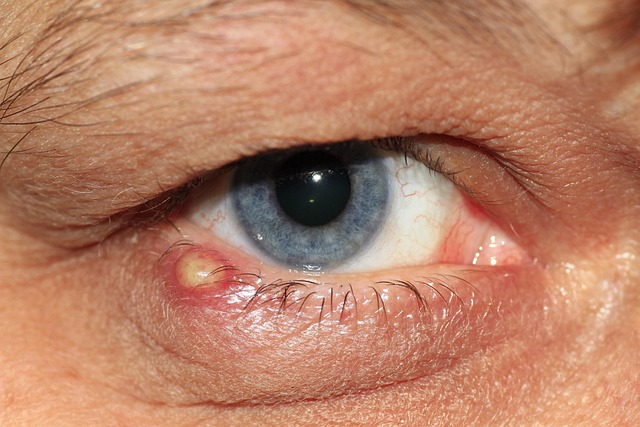Maintaining healthy hearing goes beyond avoiding loud noises and routine check‑ups. Nutrition and lifestyle choices play a subtle yet powerful role in preserving the delicate structures inside the ear. One often overlooked component of ear health is the proper balance and composition of earwax – the natural secretion that protects the ear canal from debris, moisture, and pathogens. When earwax is produced in the right quantity and consistency, it serves as a protective barrier; too little or too thick can lead to discomfort or even hearing issues. The following sections explore how specific nutrients and habits can help support optimal earwax production and overall auditory well‑being.
The Role of Earwax in Hearing Health
Earwax, or cerumen, is a golden‑brown, waxy substance secreted by specialized glands in the ear canal. Its primary functions include trapping dust, insects, and other foreign bodies; preventing bacterial and fungal growth by maintaining a slightly acidic environment; and lubricating the ear canal to avoid dryness and itching. When the ear’s natural cleaning cycle is disrupted—by over‑cleaning with cotton swabs or by excessive ear canal narrowing—wax can accumulate, leading to temporary hearing loss, ringing, or a feeling of fullness.
- Balanced production of earwax is influenced by genetics, environment, and overall health.
- Proper nutrition ensures the glands lining the ear canal receive the building blocks needed for healthy cerumen synthesis.
- Maintaining hydration helps keep earwax fluid enough to flow naturally toward the outer ear.
Key Nutrients That Promote Healthy Earwax
Research shows that certain vitamins and minerals are directly involved in the biosynthesis of earwax and the maintenance of ear canal integrity. Incorporating these nutrients into a daily diet can support a steady, healthy flow of earwax and reduce the risk of blockages.
Vitamin A – Essential for maintaining epithelial cell health. A diet rich in beta‑carotene (sweet potatoes, carrots, spinach) helps keep the ear canal lining smooth and promotes normal wax production.
Omega‑3 Fatty Acids – These healthy fats support cellular membranes, including those in ear tissues. Salmon, walnuts, chia seeds, and flaxseed provide a steady supply.
Zinc – Plays a role in keratin production, the protein that gives earwax its structure. Foods like oysters, beef, pumpkin seeds, and lentils are excellent sources.
Vitamin C – An antioxidant that protects cells from oxidative stress. Citrus fruits, bell peppers, and broccoli are natural high‑level contributors.
Water – Adequate hydration keeps earwax from becoming overly thick or sticky, ensuring it can move naturally out of the ear canal.
Dietary Habits for Optimal Ear Health
Beyond isolated nutrients, overall dietary patterns influence earwax quality and hearing health. A balanced Mediterranean‑style diet—rich in fruits, vegetables, whole grains, lean proteins, and healthy fats—has been linked to a lower incidence of age‑related hearing decline. Key principles include:
- Consume a colorful variety of vegetables to ensure a spectrum of antioxidants.
- Include sources of omega‑3s at least twice a week.
- Replace refined sugars with natural sweeteners such as honey or maple syrup in moderation.
- Choose complex carbohydrates like oats and quinoa over processed grains.
- Limit excessive salt and processed meats, which can contribute to hypertension—a risk factor for hearing loss.
Hydration: The Unsung Hero
Water is often taken for granted, yet its role in earwax consistency is pivotal. Adequate fluid intake ensures that earwax remains pliable, preventing it from hardening into the sticky, impeding form that can block the ear canal. General guidelines suggest drinking at least eight 8‑ounce glasses a day, but individual needs vary with activity level, climate, and health status.
Complementary Lifestyle Practices
Nutrition works in harmony with lifestyle choices to foster healthy earwax production. Consider integrating the following practices into daily routines:
- Regular Physical Activity – Exercise improves circulation, delivering essential nutrients to ear tissues and supporting metabolic waste removal.
- Stress Management – Chronic stress can disrupt hormonal balances that influence glandular secretions. Mindfulness, yoga, or light stretching can help.
- Avoiding Excessive Ear Canal Cleaning – Over‑use of cotton swabs can strip natural earwax, leading to over‑production as a compensatory mechanism.
- Ear Protection in Loud Environments – While nutrition supports ear health, physical protection remains critical. Earplugs or noise‑cancelling headphones reduce strain that could indirectly affect wax production.
- Regular Medical Check‑Ups – Hearing tests and ear examinations can detect early signs of wax buildup or other issues, allowing timely intervention.
Safe Earwax Management
When earwax buildup causes discomfort or temporary hearing loss, professional removal by an audiologist or ENT specialist is recommended. Home remedies such as over‑the‑counter ear drops or oil can help soften wax, but they should be used cautiously to avoid irritation. Key safety tips include:
- Follow product instructions meticulously; avoid excessive use.
- Do not insert cotton swabs deep into the ear canal; let the wax naturally migrate outward.
- Seek professional help if you experience pain, discharge, or persistent blockage.
Integrating Ear Health into a Holistic Wellness Plan
Healthy hearing is a component of overall well‑being. By aligning dietary choices, hydration, and lifestyle habits, individuals can create a supportive environment for earwax production and ear health. A holistic approach typically involves:
- Planning balanced meals that incorporate the key nutrients discussed.
- Setting daily hydration targets and tracking intake.
- Scheduling routine physical activity and relaxation sessions.
- Monitoring hearing health with annual check‑ups and being attentive to changes in hearing or ear comfort.
- Educating oneself about safe ear cleaning practices and when to seek professional care.
Personalizing Your Ear Health Routine
Everyone’s ear physiology and lifestyle differ, so it’s helpful to tailor the above guidelines to personal needs. For example, individuals who work in dusty environments may require more frequent ear hygiene, while those with dry climates might benefit from increased intake of omega‑3s to combat dryness. Keeping a simple ear health log—tracking fluid consumption, food intake, and any ear symptoms—can uncover patterns and inform adjustments.
Conclusion: Nourishing Your Ears for a Clear Future
While earwax often draws attention only when it becomes a problem, its everyday role in protecting the ear canal cannot be overstated. By feeding the ear glands with the right mix of vitamins, minerals, and hydration, and by supporting these glands with a healthy lifestyle, individuals can maintain optimal earwax production and reduce the risk of hearing complications. Remember that nutrition and habits work hand‑in‑hand: the right diet creates a conducive environment for earwax to perform its protective functions, and a healthy lifestyle keeps the ear’s natural mechanisms functioning smoothly. Through mindful choices—balanced meals, adequate water, regular movement, and cautious ear care—listeners can enjoy clearer hearing and a more vibrant sense of sound for years to come.



